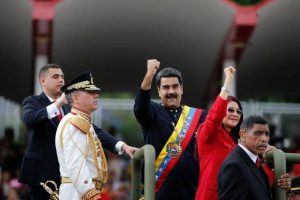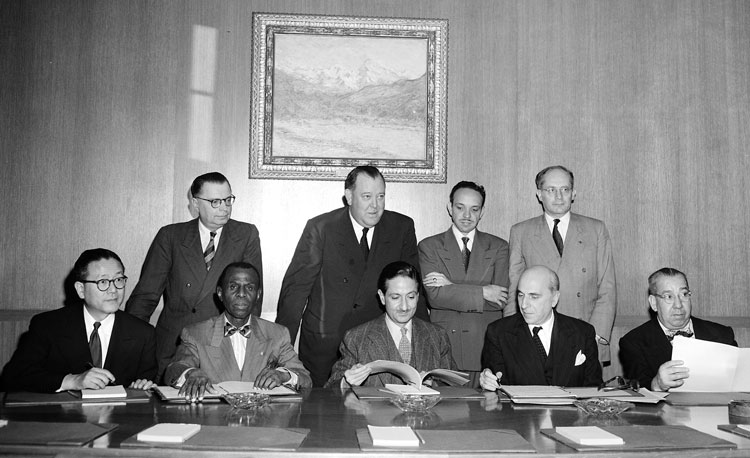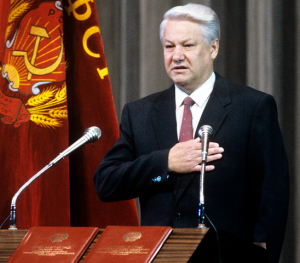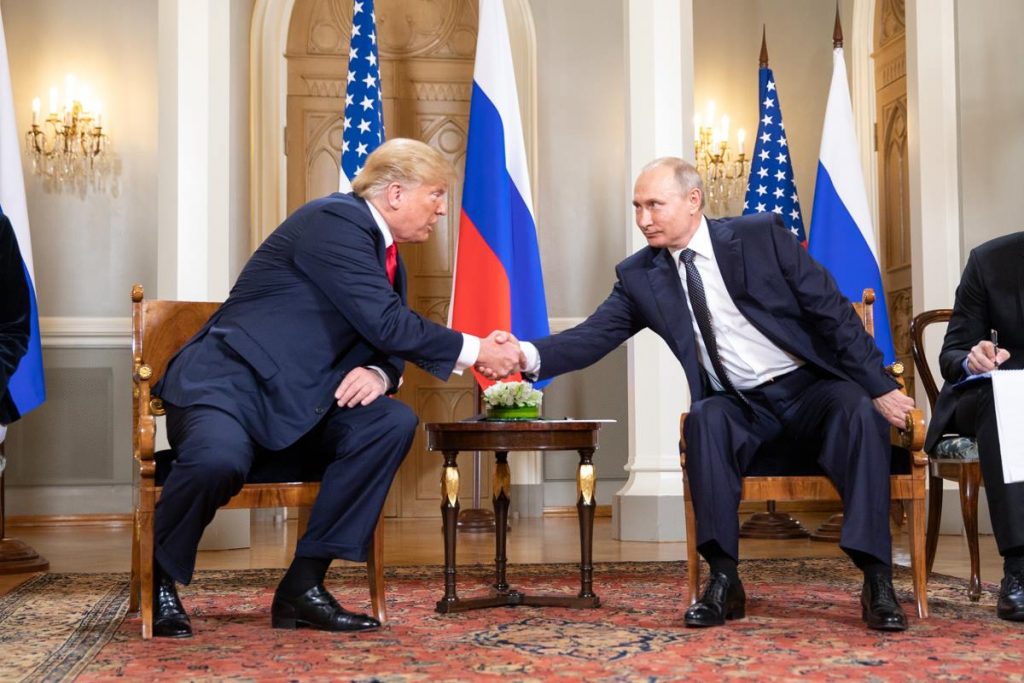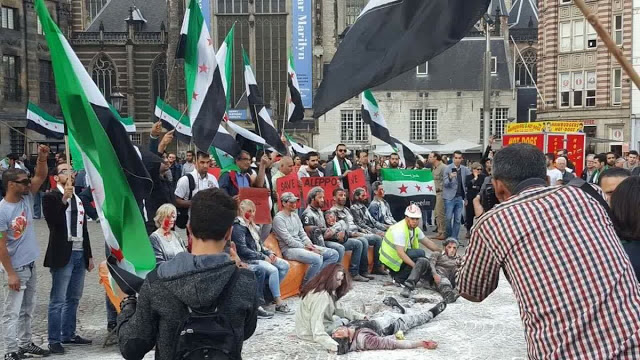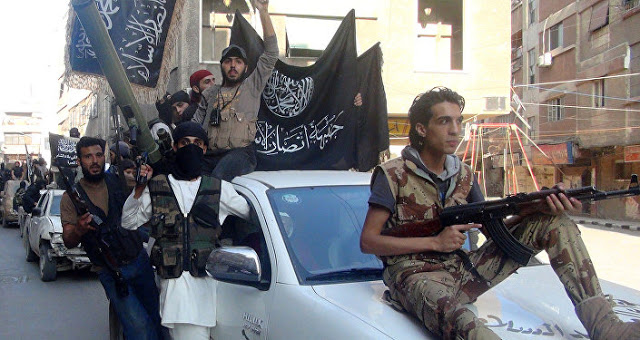Note to readers: please click the share buttons above
Introduction
A spate of ‘legalized kidnappings’ is ongoing throughout the United States. The perpetrators, however, are not criminals per se, they are agents of the government. These kidnappers operate under the banner of ‘Child Protective Services.’ Depending on the state, the banner may be ‘Public Social Services,’ ‘Family & Protective Services,’ ‘Department of Social Services,’ ‘Children’s Protective Services,’ or ‘Department of Family and Children Services.’ As for the term ‘legalized kidnappings,’ it is not of original coinage: a grassroots movement named “Stop Child Protective Services from Legally Kidnapping Children” has sprouted up in Minnesota. As one may expect, outrage, fear, and despair are brewing among parents whose children have been legally kidnapped.

In Euripides’s tragedy The Heracleidae, one reads of the hubristic agent, Copreus, of a tyrannical state, Argos, attempting to kidnap persecuted children from their natural guardian, Iolaus. (These are the children of the mythical hero Heracles.) He asserts a purported duty cum right to kidnap these children, explaining, “It was King Eurystheus of Argos and Mycenae who ordered me to come here and bring these back,” mirroring what many legalized kidnappers tell parents: “It was my manager, the agency director, who told me to . . . .” Copreus wants “to take back what is ours.” and when he is thwarted in his lawless conduct, he threatens: “I go; for ’tis feeble fighting with a single arm – but I will come again, bringing hither a host of Argive troops, spearmen clad in bronze.” Thwart a legalized kidnapper and he or she too will come again, bringing thither heavily-armed sheriffs deputies and police teams at his or her back.
This is the terrifying predicament far too many American parents have faced. And do face. And will face.
Background
Since Ancient History, children have been the most vulnerable and exploited class or demographic within the Human family. From those Ancient Times up to and including the Rennaisance in Europe, children have been killed, abandoned, raped, sold, bartered, exploited for manual labour, trafficked for sex, killed as ’sacrifices,’ and more, and all this not only as isolated or case-specific transgressions, but, even within the framework of socio-cultural customs and folkways. In a number of underdeveloped (and less-civilized) countries, the lot of children is not very different from what it was in Mediaeval Europe. In view of the vulnerability of children, Child Protective Services theoretically serve a necessary, perhaps even a critical, purpose.
In the late Nineteenth Century when child-related services did not exist, the rescue of a physically abused child, Mary Ellen Wilson, by a private person in ‘Victorian New York,’ so to speak, attracted a fair amount of publicity and provided the impetus for establishing agencies that were the forerunners of modern-day Child Protective Services. On the other hand, in Intolerance (1916), D.W. Griffith provided an ominous ‘advance screening’ of smug do-gooders who style themselves as ‘Uplifters’ carrying out the self-righteous kidnapping of a child from a poor but loving mother, ‘the Dear One.’ The modern, politically-correct, name for these ‘uplifters’ who take away other people’s children is ‘Child Protective Services.’
Child Protective Services has done some good work. It has also done a lot of harm, and now the harm it is doing is on the rise. Could the harm actually be outweighing the good? Taking a fair amount of evidence and reportage into account, the answer to that question would be, “Depending on the state, ‘No,’ ‘Likely,’ and even an unequivocal ‘Yes’.” The time is past due for Child Protective Services to be either abolished or entirely re-designed (not merely restructured or reformed). The goal should be to design a system and provide a mechanism whereby every Mary Ellen is rescued from maltreatment while no Dear One loses her beloved child to self-righteous autocrats on the rampage. And also where no latter-day Copreus acting on behalf of a tyrannical government can wrench away American Hereacleidae from their natural guardians, heedless to their cries for mercy and justice.
Some Cold, Hard Realities
In Post-Industrial nations, Child Protective Services have outgrown their utility and purpose, and, in their present structures and designs, appear to be causing more harm than good. It is in these very countries where these agencies and services are most prevalent and act with untrammelled power that they are needed the least because the well-being of children, on the whole, is certainly not a cause for concern.
Child Protective Services is supposed to function with ostensible checks and balances but in reality there are virtually no checks or balances, external or internal, that determine whether or not a child will be ‘kidnapped’ once the system zeroes in on a target. Numerous first-person accounts indicate that case-workers, police, sheriffs, and family court judges march in lockstep, and that a decision to remove a child from his parents and place him in foster care is extremely difficult to reverse, even if evidence indicates that the decision was erroneous or wilfully contrived. Child Protective Services has clearly followed the Criminal Justice model: just as the latter model incentivizes and rewards convictions, the former incentivizes and rewards removals (or ‘kidnappings’) of children, and their placements into adoption.
The most glaring problem appears to be authoritarian, totalitarian agencies where each case-worker is a law unto himself/herself, smug within the confines of his/her limited morality and imperious in the extents of his/her apparently unbounded power. Like Copreus to Iolaus, they tell the parents, “Your betters here have found you and will have the final say,” as they legally kidnap a child. Of checks and balances, boundaries and controls, there is little evidence, and what little there was is fast eroding.
Rescues and Kidnappings
Child Protective Services often does a very good job in removing suffering children who are physically abused or maltreated, sometimes horribly abused or maltreated, and for this they deserve credit. However, the invisible forms of abuse and maltreatment – emotional and psychological abuse – are extremely harmful to a child’s psyche, certainly more so than regulated and deserved corporal punishment, yet these are the very forms of abuse and maltreatment that escape observation. Casual humiliation and degradation, sudden and undeserved chastisements and rebukes, routine blaming and accusing, heaping of guilt and shame, treating a particular child like an outcast or third-class citizen – these and other forms of invisible abuse and maltreatment deserve recognition, and it is children who are subject to such spirit-shattering abuse who need help. Yet Child Protective Services have presumed to ‘rescue’ – or legally kidnap – perfectly content children from caring parents because:–
- The child was supposedly ‘too thin’ and underweight, notwithstanding that he was alert, active, and energetic;
- The child was playing in the yard alone and ‘unsupervised;’
- The child was walking with another child, but without an adult, to and from a park or school;
- The child was taken to a medical centre but was not admitted and was brought back home;
- The child fell down at home and hurt himself;
- The child was a home-birth, i.e. was born at home;
- The parents were running an ‘unstable’ and ‘chaotic’ household;
- The child’s parent was the target of a vague and non-specific complaint by an anonymous complainant;
- The child’s mother reported a physically strong and dominant family member who was abusing her child, after which Child Protective Services accused the complainant mother of failing to ‘protect’ her child.
Multiply each of the above by ten. Or a hundred. Very possibly, a thousand.
These ‘reasons’ are about as good – or bad – as that expressed by Copreus: “These boys, here, I’m taking them all to Eurystheus because, like it or not, they’re his property!” State fiat needs no reasons. And, in the United States, are not children increasingly being viewed as the State’s ‘property’?

All too often suffering and abused children’s own pleas for help are discounted, sometimes with preventable and tragic consequences, yet other children are ‘legally kidnapped’ on the basis of isolated incidents and highly-subjective personal opinions. After all, the quotidian realities bulletized above are not reasons to ‘legally kidnap’ children from their parents. Self evidently, the system is malfunctioning. It is necessary to move beyond a jumble of ideologies, interventions, suspicion, cynicism, adventurism, and corrupt financial considerations, and proceed to:
- Published and comprehensible engagement policy and procedure;
- Objective standards;
- Consistent interpretation; and,
- Verifiable iterations, within;
- A rigourous and well-designed yet common-sense system.
A pictorial representation of the system would be helpful for all stakeholders.
It is not as if written documentation and policy do not exist; they do, both internal and published. The question is whether this documentation is helpful and comprehensible to Child Protective Services officers and staff themselves, let alone the general public. Standards are hard to find and no traceable systems seem to have been designed. Boilerplate, jargon, doublespeak, and politically-correct posing reign supreme in documentation and manuals.
Finally, a well-designed system should incorporate exception-handling paths to account for unanticipated developments or unforeseen scenarios that would have to be handled through human discretion and good judgement but within the system’s boundaries.
The Balkanized States of America
One cannot deny the increasingly obvious fact that the United States is now a balkanized and fractured nation. These fractures run along various fault-lines, including but not limited to: national origin, race, religion, ethnicity, socio-economic status, and even political doctrines and dogmas. The antagonisms inherent and increasing in such a crazy quilt national fabric have broken the very concept of society and has spawned you-against-me, me-against-him, and him-against-you cross-currents of suspicion and bad blood. An operation as delicate as a service to protect children cannot not only function properly in such a country; it lends itself to being subverted by those who would misuse power with ulterior motives or dishonourable intentions, and may even engage in vendettas across societal fault-lines. Just as an individual ought to be self-aware, so too should a nation and its various components be self-aware, and such self-awareness would be both helpful and useful toward fundamentally re-designing any service for the protection of children.
Furthermore, America’s socio-economic systems are in an advanced stage of entropy. Parents who are exhausted and who run themselves into the ground in order to make ends meet will naturally end up neglecting their children. Yet it is for these very children that the ‘negligent’ parents are working themselves to the bone, leaving themselves with little time or energy to attend to the children. It is patently unjust and inhuman to legally kidnap such parents’ children on counts of neglect. The Law should recognize such a legal concept, predicated on observable phenomena, as ‘Impelled Neglect’ to account for those situations in which the accused or offending parent is manifestly not in full control of his/her own choices and lifestyle through no fault or failing of his/her own.
The U.S. has taken to exporting its sociopathologies to Western Europe’s post-Christian neo-Pagan nations. Just as much, the latter have taken to importing Neo-Trotskyist America’s sociopathologies. Like a contagion, helped along by globe-girdling left-liberal organizations, these pathologies invade and infect other polities and societies throughout the world. If anything, the rest of the world should look to the United States’s so-called ‘Child Protection Services’ and take a How-Not-To lesson.
Otherwise, we shall see British Heracleidae, French Heracleidae, Australian Heracleidae . . . and in each of these affected nations, a present-day Iolaus who has fled with his children to some other state or another country will plead – probably impotently – with his perceived protectors, “We ask you to stand by us and to keep the [government] from kidnapping us by force.”
The Foster Care Racket
America’s government-allied and homogeneous mass media frequently carry reports of parents abusing their children, often cruelly so. There is another even more horrible reality that these media organs do not report and suppress because this reality does not serve the government’s interests or fit with the media’s propaganda angle: the foster care racket and the neglect, maltreatment, and abuse prevalent within that system, and the lifelong harm and injury inflicted upon vulnerable children.
The foster care system used to comprise of individual couples who, out of compassion and generosity, would accept a child or two and provide for the child/children out of their own pockets with a partial subsidy from the government. Now, this system is a mushrooming business run with a profit motive. Many states require foster care businesses to have a ‘license’ for benevolent deeds people used to do out of the goodness of their hearts thereby discouraging those very kinds of people; at the same time, these states provide increased payouts (under various line-items and allowances) to foster parenting businesses, thereby encouraging exactly the wrong kinds of persons to apply to become foster parents.
One can read both sides and many sides of the foster care issue, coming straight from the horses’ mouths, on a few sites with authentic comments and on-the-ground experiences.
Foster care providers are given a sum of money per child which varies according to the state (or county or local district for a few states), child’s age, disabilities, special needs, etc. This money is called ‘subsidy’ or ‘reimbursement’ and the payout depends on published rate tables. Further, this income is non-taxable. Other ‘allowances,’ such as an annual allowance for clothing, are also on offer. However, the amount that a state expends on and for Child Protection, including foster care, is much smaller than what the state receives for this purpose from the Federal Government. Credible allegations abound that states, counties, and/or cities pay out only some partial amount – perhaps a small fraction – of the Federal funds they receive for foster care, and stash away a large amount, perhaps the greater amount, in their own coffers. The difference between the amount received by the respective state’s government and the amount actually spent on the child is the foster care provider’s profit per child. The more money a given foster care business rakes in per child and the less they spend for that child, the higher its per-child profit. The more children a foster care centre is allocated or accepts, the higher its total income and the higher its gross profit. In some states (e.g. Alaska, D.C., Nebraska), foster parenting is a lucrative business. This system, once operating on a bedrock of human compassion and generosity, is now a captialistic racket that is increasingly played for financial profit. The predictable outcome: abused and maltreated children.
As a result, there are quite a number of instances of throwing children from the frying pan into the fire. While no abuse is better than some abuse, some abuse is not so bad as a lot of abuse. And all this in the name of the ‘legally kidnapped’ children.
At least Copreus and Argos did not dissemble; they did not disguise their true intentions; unlike Child Protective Services, they made no sanctimonious noises about “What is best for the children.” They wanted to kidnap – legally or otherwise – the Heracleidae, and they were open about it: “Just the same, as they belong to Argos, I shall take and drag them away.”
Re-Designing the Failing System
The best human beings’ best efforts will yield flawed and error-riddled outcomes if the systems they are operating are defective and poorly designed. It is also true that the best-designed of systems are doomed to producing wretched results if the persons operating the systems are bent upon perverting the systems and rigging the outputs. All policy and procedure are only as good as the group of people who are supposed and expected to adhere to and take guidance from them. That allowed, the more rigourous, correct, and complete the policy and procedure, the less prone they are to misuse and subversion. Child Protective Services needs to be re-designed from a blank slate, with a special emphasis on employing the right human material. Necessary requirements could include:–
- Independent psychological testing should be put in place to ensure that all personnel related to Child Protective Services, including family court judges, fit a certain personality profile, for example Myers-Briggs xNFJ Types;
- Similarly, independent psychological testing should be put in place to ensure that prospective foster parents and prospective adoptive parents fit a certain personality profile, for example Myers-Briggs xNFJ Types;
- Further, behavioural profiling may be administered by independent and uncompromised specialists to ensure that no ‘red flags’ are spotted;
- Recruiting services workers from particular classes, be they occupational or other classes, which have an established reputation for good moral fibre, such as America’s reference librarians and firefighters;
- Each complainant must be required to state under oath under penalty of perjury his/her/their relationship(s) or previous interaction(s) with the accused parent(s) and/or the child(ren) in question;
- Taking into account any exculpatory testimony from those who would be expected to have first-hand knowledge, such as neighbours and community members, into proper account while also inquiring into whether or not the complainant or a (purported) witness bears a grudge or has some secret motive against the accused;
- No threats, ultimata, entrapment, blackmail, or ‘or-else’ coercive techniques may be essayed by an services worker against any parent (and which should be grounds for termination of the offender);
- Children may be removed only between 9 a.m. and 5 p.m., and with prior formal notice to the parents including date, time, and location;
- Discarding neglect, and parental disability, where that is used, as any sort of grounds to remove a child from the custody of the parent(s) and identifying abuse or maltreatment of any kind as the sole criterion for removal; neglect, mistakes, or differences in opinion as to child-rearing may be captured on the record but may in no wise be used as grounds. Abuse and maltreatment, and only abuse and maltreatment, be it physical or psychological, should be the sole grounds for removal of a child from his/her present custodians or guardians;
- Discarding Preponderance as the standard of evidence and instituting Beyond Reasonable Doubt (or, at minimum, Clear and Convincing) as the standard of evidence, in view of the extreme nature of the outcomes and resolutions;
- If the child is at least, say, four, then according primary consideration to the testimony and wishes of the child himself/herself.
(Positive testimony of abuse or maltreatment by a particular child should be sufficient only for the removal of that child; such testimony should not be sufficient for incrimination or arrest of the accused adult, nor should it be sufficient for the removal of any other child, especially one who provides countervailing testimony. This proposed rule is based upon the principle that what a person – child or adult – presumably believes, alleges, or avers, taken at face value and without corroborating evidence, should be sufficient to provide assistance and aid to him or her but not cause harm or injury to another; also, the proposed rule also allows for an observed pyschological disorder in some children such that they manipulate adults by lying very convincingly. Therefore, in such a situation, on the balance of the probabilities, to minimize injury or harm, and to maximize assistance and aid, the complainant child may be removed from parental custody but no other action should be taken.)
The importance of Psychological personality profiling and behavioural profiling, at least to weed out psychopathic personality types, cannot be over-emphasized. One need only see George Cukor’s Gaslight (M.G.M., 1944), David Lean’s Great Expectations (Rank, 1946), Charles Laughton’s The Night of the Hunter (M.G.M., 1955), and James Cameron’s Titanic (Paramount / 20th Century, 1997) and consider the characters of, respectively, Gregory Anton / Sergius Bauer (the antagonist role), Mrs. Joe (a small part), Harry Powell (the lead role), and Ruth Dewitt Bukater (a supporting role). These characters fit certain cold-blooded personality types that are abusive and malevolent in private, but who have the knack of ingratiating themselves to helpful outsiders by virtue of pleasing words uttered by silvery tongues, and who also possess an innate talent in presenting false faces and painted smiles to the world at-large. These kinds of persons make the worst parents, and also the worst persons within Child Protective Services, from case-workers to judges. And, most certainly, the worst foster parents and adoptive parents.
Child Protective Services and the power over other human beings it vests in its officers and case-workers attract the very kinds of personality profiles who are unfit for such an occupation while those with the personality profile to cautiously, responsibly, and compassionately exercise power are reticent to apply. All too often Child Protective Services, the police, and judges act like they are a law unto themselves. It would have behooved Child Protective Services and Family Court judges to heed the words of the Athenian Chorus to Copreus: “Stranger that thou art, wouldst drag away by force suppliant children . . . without having any honest plea to make” – emphasis on the word ‘honest.’
Organizational and Functional Re-Design
At an organizational and functional level, Child Protective Services needs to be re-designed to minimize the chances of corrupt malpractices and systemic failures. Rules, stipulations, and methods could include:–
- No ‘bonus’ or financial incentive or any other incentive should be on offer for agency, agent, or case-officer for the removal of a child from parental custody, placement into a foster home, for continuing a placement in foster home, and/or for placement into adoption;
- No goals or targets may be set by the government at any level or by any agency for the removal of a child from parental custody, placement into a foster home, for continuing a placement in foster home, and/or for placement into adoption;
- Parents to have the fullest right to video-record (or audio-record) all interaction between themselves and/or the child and Child Protective Services workers and related personnel, such as police, sheriffs, and judges; and this right may not be infringed or abridged;
- The careful preservation of all evidence, with the destruction of any evidence being a criminal offence;
- No relationship, arrangement, understanding or quid pro quo between Child Protective Services or any of its agents / case-workers, and a/the foster care provider business, foster care individual, or adoptive parents (a violation of this rule should be criminal offence);
- The introduction of an adversarial (to Child Protective Services) quality assurance specialist whose task would be to verify all system iterations against the system design, or, at least, verify a randomly selected subset, no less than 40 percent; of system iterations;
- Evaluations and promotions should not be based at all on effecting removals of children from parents’ custodies, placements into foster homes, and/or placements into adoption;
- Evaluations and promotions should be predicated upon adherence to policy and procedure, compliance with standards, and proceeding with a high degree of system-correctness;
- Precluding a ‘Wall of Silence’ culture and ‘You got my back, I got your back’ arrangements by way of constant shuffling and transfers of personnel, including – very importantly – inter-state shuffling and transfers;
- At the same time, principles and methods of, and lessons learnt from, Community Policing and non-adversarial intervention should be incorporated into policy and procedure;
- Removed children should be monitored in their new homes or other abodes for emotional and psychological well-being, and feedback loops should be put in place;
- The system should further be designed to recognize and rectify any mistake;
- The foster care racket should be done away with for good.
Finally, one of the most pressing problems surrounding removal of children from parental custody is that the wealthier the parents, the better the lawyers they can retain while poor parents usually have to deal with Child Protective Services and Family Court judges themselves, or, at best, using the services of over-burdened public defenders, with predictable results. Thus, wealthy parents’ top-notch legal representation usually wins the day, even through sophistry, crookery, and quid pro quo arrangements with judges, while parents who cannot afford good lawyers all-too-often pay a devastating price that no loving parent should have to pay.
Yet even this built-in systemic defect can be detected. The new system would require that for each accused parent(s) against whom any Child Protective Services complaint has been brought, its assets, annual income, mean income of locality, and median income of locality be plotted on a decile graph for that state. On an annual basis, plot the outcomes of every child abuse or maltreatment complaint, from no grounds found to child removed and placed into adoption, also on the same plane, using colour coding to identify outcomes. There should be no correlation – at least no statistically significant correlation – between the socio-economic statuses of accused parents and the outcomes of child-related complaints. That is, the two scatter-graphs’ plot-points should turn out to have no correlation with one another, and the outcomes’ plot-points should turn out to be randomly scattered across the deciles. Unless independent scientific research conclusively demonstrates a correlation between socio-economic status and child abuse and maltreatment (which it does not), a correlation between the socio-economic statuses of accused parents and the outcomes of child-related complaints would indicate that the system is malfunctioning, remains biased against the poor, remains rigged in favour of the rich, and that ‘money talks.’
As Iolaus – the guardian of the Heracleidae – implores the Athenians, he cries: “in the last extremity of woe that we have found friends and protectors here, the only champions of these children through all the length and breadth of this country.” Yet if intelligently-, precisely-, and sensitively-crafted rules, stipulations, and methods are enacted and instituted, then the resultant system would function as both ‘protector’ and ‘champion’ of children at risk . . . ‘protecting’ and ‘championing’ children from, both, parents and Child Protective Services themselves.
In the Balance—
Oddly enough, it is in those very countries where children are abused or maltreated, sometimes severely, that Child Protective Services do not exist: the child is left to fend for himself/herself. He/she may keep trying to live with his/her grandparents, threaten to or attempt to run away from home, actually run away from home, or, in the most tragic cases, take his/her own life. Conversely, it is in First World countries where genuine abuse or maltreatment are relatively uncommon and children are for the most part well cared-for that Child Protective Services officers, case-workers, and their support systems are out of control.
That said, child abuse and maltreatment does occur and a private person may even chance upon an ostensible parent clearly abusing a child, with the child exhibiting fear or terror. In such an event, it would be right-minded of the observer to note down identifying characteristics such as a vehicle tag number or video-record the abuse or maltreatment discreetly, and report the incident to the authorities. Such conduct cannot be considered ‘snitching;’ rather, it is a civic obligation.
Perhaps the state of affairs in the former set of countries is not as worrying and unsettling as in the second set: for local governments and citizens groups can always – hopefully with all due care and caution – found and charter Child Protective Services – there is always hope. But in the second set of countries, where the System itself is corrupt and Child Protective Services itself causes psychological harm and injury, often lifelong, to children, hope is thin on the ground. It is easy to get into a maze where monsters dwell; not so easy to get out of it.
Less-advanced countries whose societies may be considering the establishment of Child Protective Services would do well to take salutary and preceptive lessons from the realities in the United States. Or, for that matter, from the Hellenes: “Who can judge or choose the merits of a case before one hears clearly both sides of it?,” which was what the Chorus opined when Copreus tried to kidnap the Heracleidae, imparting a check and balance against a state’s hostile agent.
Then again, depending on the country and the sense of pride and liberty of its people, some or another enraged parent may well end up echoing the words – albeit spoken in a case of mistaken identity – of Alcmene, the Heracleidae’s redoubtable grandmother: “I’ll fight kidnappers till my last breath . . . . If you so much as lay a hand upon these children, then you’ll have the glory of attacking me first.”
Conclusion
In the U.S. and several other Western countries, as it is, the State through public schools and its various agencies and commissions has usurped the rightful role of parents as the primary rearers of their children and the moulders of their morals. Now, parents are being robbed of even the joy and companionship of their own children as legalized kidnappings proceed apace and spiral out of control.
After so many legalized kidnappings of children from good, honest, and loving parents, sooner or later some parent who is at the end of his or her tether will, channelling Patrick Henry, cry, “Is life so dear, or peace so sweet, as to be purchased at the price of chains and slavery? Forbid it, Almighty God!” pick up a shotgun, and blast away at the state’s legalized kidnappers. Considering the seething fury that is bubbling in small-town America against a totalitarian government’s tyrannical agents, it is only a matter of time before the legalized kidnappers try to kidnap the wrong child from the wrong parent.
As for The Heracleidae, it ends in the defeat of the Argive legalized kidnappers – and climaxes with the execution of the Eurystheus who was the motive force behind, among other misdeeds, the attempted kidnappings of the Heracleidae. Alcmene rages: “Now, you must die a miserable death but even that will be too good for you: because after all the dreadful deeds you have performed you ought not to die only a single death . . . . Go on, take him away! Kill him! Kill him and then throw him to the dogs!”
That which plays out in ancient Attic fiction, in view of undeniable and rapidly-deteriorating realities, could plausibly play out as contemporary American fact.


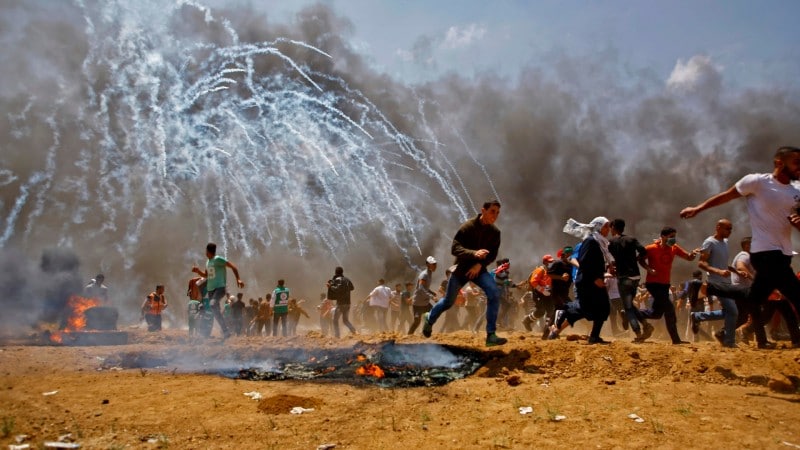

 Can you
Can you 



